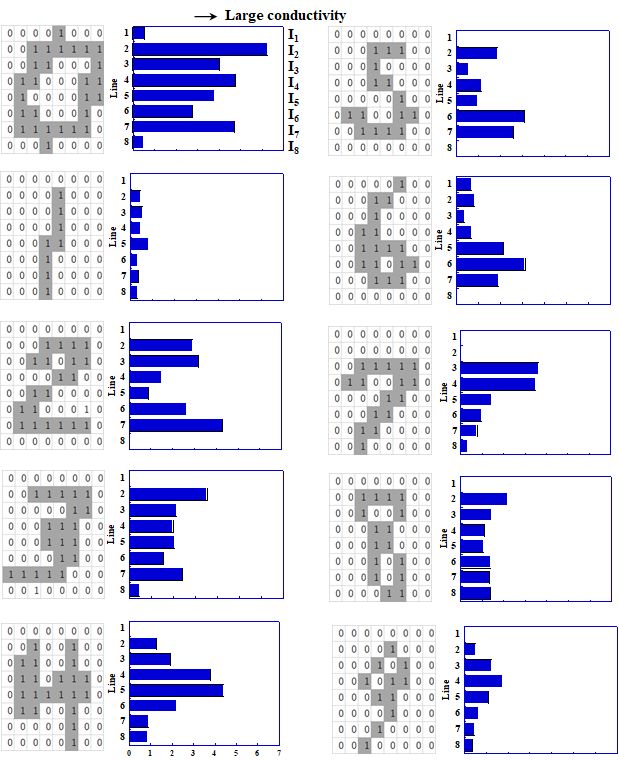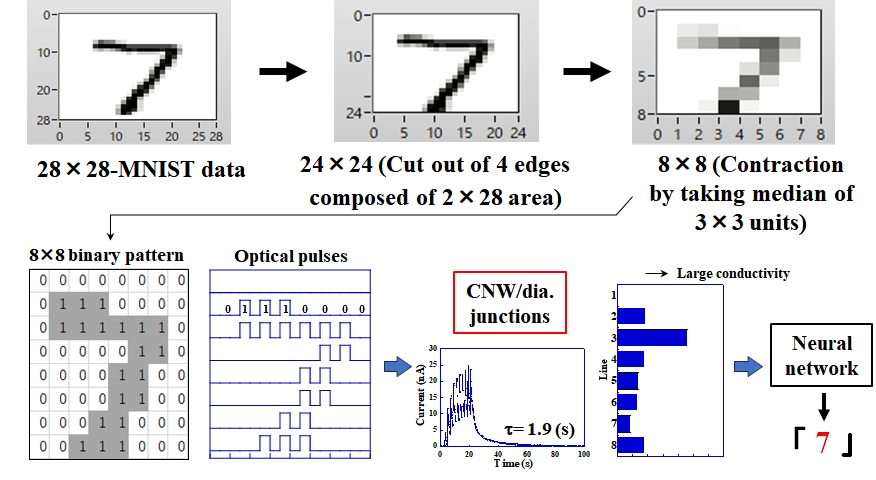


@Development of novel optical devices using diamond/graphene junctions
@E Image recognition using diamond/graphene junctions
@Recently, reservoir computing (RC) using various physical phenomena such
as laser light,
rippling water surface, memristors, etc., which have complicated dynamics,
has been paid much attention.
Higher speed learning and prediction with lower calculation cost is expected
to be realized
by implementing the physical phenomena to the reservoir system. However, the research on physical RC
had only just started, and physical reservoir systems suitable for high
speed and high efficiency computing
has been seeking.
@We newly found that it is possible to perform physical RC by using graphene/diamond
heterojunctions
and recognize MNIST hand-written digits (0-9) by using the junctions for
the first time.
@These images were decomposed into each row containing 8 sequential pixels, like 01110000, c,
and optical pulses correspond to each row were irradiated to the junctions.
Each conductivity value
of the junctions was memorized after irradiation by each sequential pulse,
and eight conductivity values
(I1-I8) were obtained. The conductivity of the junctions was changed in
a complex way because of
short-term memory functions of them. The five conductivity values are different for each digit,
and it is possible to recognize each digit (0-9) after transferring them to the simple, two-layered neural network.
@As a result, we have obtained excellent recognition ratio of `80%. These
results indicate
that the graphene/diamond junctions work as physical reservoirs and can
be used as novel brain-mimic
devices with both photo-memory and computing functions.
@@Fig. P: Schematic view of image (digits) recognition using diamond/graphene
junctions
@@Fig. 2: Digit dependence of photoconducting values (I1-I8) of the junctions
@Details are shown in the following manuscript.
@@@ iRef.: H. Iwane, G. Saito, S. Muto, and K. Ueda, J. Mater. Res., 39
(2024) 2107-2114,
@@@@@@@ Y. Ito, H. Iwane, S. Jia, and K. Ueda, Applied Physics Express, 16 (2023) 071004-1-5